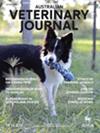Evaluation of the prevalence of the dog erythrocyte antigen 1 blood type in dogs of Sydney
Abstract
Objective
This study aimed to evaluate the prevalence of dog erythrocyte antigen 1 (DEA 1) blood type in Sydney and to identify any associations between its prevalence and breed, sex and geographic location of these dogs.
Methods
This was a retrospective study of 225 dogs that underwent DEA 1 blood typing while donating or receiving blood products at a single institution between 2020 and 2024. Dogs were DEA 1 positive or negative and blood donors or recipients. Logistic regression was used to evaluate differences in the prevalence of DEA 1 positive results between sex, breed and geographic location. Significance was set at P < 0.05. Reasons for blood transfusion, blood product administered and age were documented.
Results
Of the dogs that were blood typed (n = 225), 48% (108/225) were DEA 1 positive and 52% (117/225) DEA 1 negative, 105 (46.7%) were donors and 120 (53.3%) recipients. The highest prevalence of DEA 1 type positivity was observed in the Golden Retriever (8/9, 88.9%). Recipients presented primarily for haemorrhage (57/120, 47.5%), most frequently receiving whole blood (89/120, 74.2%) with minimal adverse reactions (3/120, 2.5%). No significant differences were identified in prevalence of DEA 1 positive dogs between breed groups, six most common breeds, sex, geographical location or DEA 1 negative blood types.
Conclusions
The prevalence of the DEA 1 blood type in this cohort of dogs in Sydney is comparable to other countries.

 求助内容:
求助内容: 应助结果提醒方式:
应助结果提醒方式:


